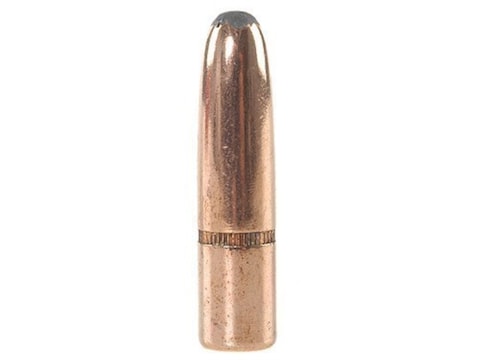NuclearMeltdown
Member
- Joined
- Sep 27, 2006
- Messages
- 226
A few weeks back I picked up a Brazilian 1908 -- you know, the full-length South American Mauser in 7x57. The shop had some 139 grain PRVI, so I bought a box to see if it was accurate and to for brass to reload.
After cleaning cosmoline and giving the barrel a scrub, I was greeted with 16 inch (!) 100 yard groups. I was afraid of this due to the bullet weight and seating depth of the PRVI factory loads. I don't think I've ever shot a group so large. I couldn't even really tell whether the group was centered above or below point of aim.
Graf's had .284 174 grain PRVI flat-base soft points. These are long bullets with a long bearing surface. I loaded these up to a ridiculously long OAL (almost a whole caliber-length was exposed beneath the cannelure) over 33.5 grains of IMR4064. My final group (six shots) was half the size of the original groups -- around 7", with all but one within about 4". Even with the limitations of the inverted V sights, I think this can still be tightened up a bit.
Original military loads used a relatively heavy, long bullet, which I was trying to get closer to by choosing the 174-grains bullets. I also have some 150 grain bullets around, but I was hesitant to use these after seeing how poorly the 139 grain performed. I know that my next steps are to play with charge weight and seating depth, but do any 7x57 or military Mauser aficionados have any experience with a similar situation?
After cleaning cosmoline and giving the barrel a scrub, I was greeted with 16 inch (!) 100 yard groups. I was afraid of this due to the bullet weight and seating depth of the PRVI factory loads. I don't think I've ever shot a group so large. I couldn't even really tell whether the group was centered above or below point of aim.
Graf's had .284 174 grain PRVI flat-base soft points. These are long bullets with a long bearing surface. I loaded these up to a ridiculously long OAL (almost a whole caliber-length was exposed beneath the cannelure) over 33.5 grains of IMR4064. My final group (six shots) was half the size of the original groups -- around 7", with all but one within about 4". Even with the limitations of the inverted V sights, I think this can still be tightened up a bit.
Original military loads used a relatively heavy, long bullet, which I was trying to get closer to by choosing the 174-grains bullets. I also have some 150 grain bullets around, but I was hesitant to use these after seeing how poorly the 139 grain performed. I know that my next steps are to play with charge weight and seating depth, but do any 7x57 or military Mauser aficionados have any experience with a similar situation?






